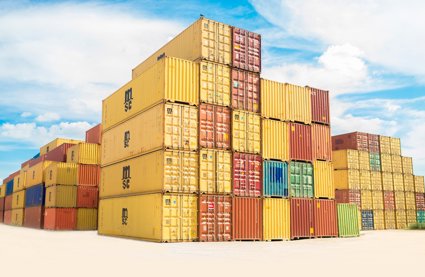
Why can people buy more stuff than they used to?
This lesson explores just how much money we spend on stuff
Key questions
How and why has the average level of wealth in the UK grown over time?
What do we spend our money on?
How and why has the average level of wealth in the UK grown over time?
Before the 1970s, household incomes were not high enough for families to buy as much food and as many consumer goods as they do today. Society has become richer as more people have moved out of low-paid factory and farming occupations and into well-paid office jobs. People now have more disposable income to spend on consumer goods and leisure pursuits, and this is also reflected in the average amount of pocket money that UK teenagers receive, especially in comparison with teenagers in other countries of the world. Whereas in the 1970s a teenager might have been content with a bicycle and a radio, in the 2000s the range of products that a teenager may own has expanded dramatically to include iPods, lap tops, mobile phones and DVD players - amongst many other things.
What do we spend our money on?
As well as a rise in average incomes, another reason we are able to consume more is that the relative prices of many of the goods that we buy have fallen. This is particularly the case for manufactured electrical and hi-tech products, and is related to the emergence of cheaper producer nations overseas as well as improvements in the technologies of production.
When they were first made available a few years ago, set top (Freeview) boxes cost over £100. In 2007, however, Tesco launched a digital set top box which cost just £10. Chris Price from consumer electronics website TechDigest claims that the low prices are the result of an extremely competitive market for these products. There used to be just a few retail outlets selling electrical products, but now that it is possible to buy them in so many different places, including online and in the supermarket, retailers are cutting prices to attract customers.
Other products that have seen dramatic price decreases over the past ten years include powerful computers (a drop of 90% from £2500 to £250), DVD players (90% from £300 to £30), small TVs (76% from £400 to £100) and CDs and DVDs (50% from £16 to £8). Clothes have also seen a fall in price - the average price has dropped 36% since 1996 and it is now possible to buy a pair of jeans for £4.
However, there are some negative impacts of these price drops. Product quality is often sacrificed, and people come to see such items as ‘disposable' - it is cheaper to replace them than fix them. This has implications for the amount of waste we dispose of, much of which in the case of electrical items may be toxic to the environment. Importing products from cheaper factories overseas has further environmental impacts, and there are social implications both for the low paid overseas workers, and UK workers who may have been made redundant with the closure of factories here.
Further information can be found in the following article: 'Consumers enjoy falling prices'.
Links
Starter
Global patterns of pocket money
How does the amount of pocket money that children receive vary between different countries of the world?
Have a go at the pocket money interactive activity to see if you can match the pocket money to the country.
Why do you think that the differences exist?
Do any of the amounts surprise you?
Main Activity
Why are people in Britain buying more stuff than in the past?
Why do teenagers today have more stuff?
Think about the story of Oliver Twist. Think about how life has changed since the nineteenth century, when this story is set.
-
What work did people do?
-
How were they paid?
-
How do things differ today?
-
What impact does this have on people's shopping habits?
The falling costs of electric stuff PowerPoint highlights another reason why people are able to buy more stuff than in the past.
What has happened to the prices of some of the products we buy, like TVs and CDs?
Why has this happened?
Have a go at the teenage consumers interactive activity to see how teenagers' patterns of consumption have changed over time.
The big debate - freedom or force?
As a consumer, do you feel that you have a free choice about what you buy, or do you feel under pressure from advertisers and the media to buy certain things? Why is it so important to own the next big thing?
Prepare a statement arguing either that you have the freedom to buy what you want or that you feel under pressure to buy certain things.
Your statement will contribute to a class debate on the subject 'freedom or force?'
Plenary
From this lesson we have learnt that the key factors influencing patterns of consumption are changing wealth, cheaper goods, better technology and advertising.
Which do you think is the most important factor? Why?
File nameFiles
File type
Size
Download